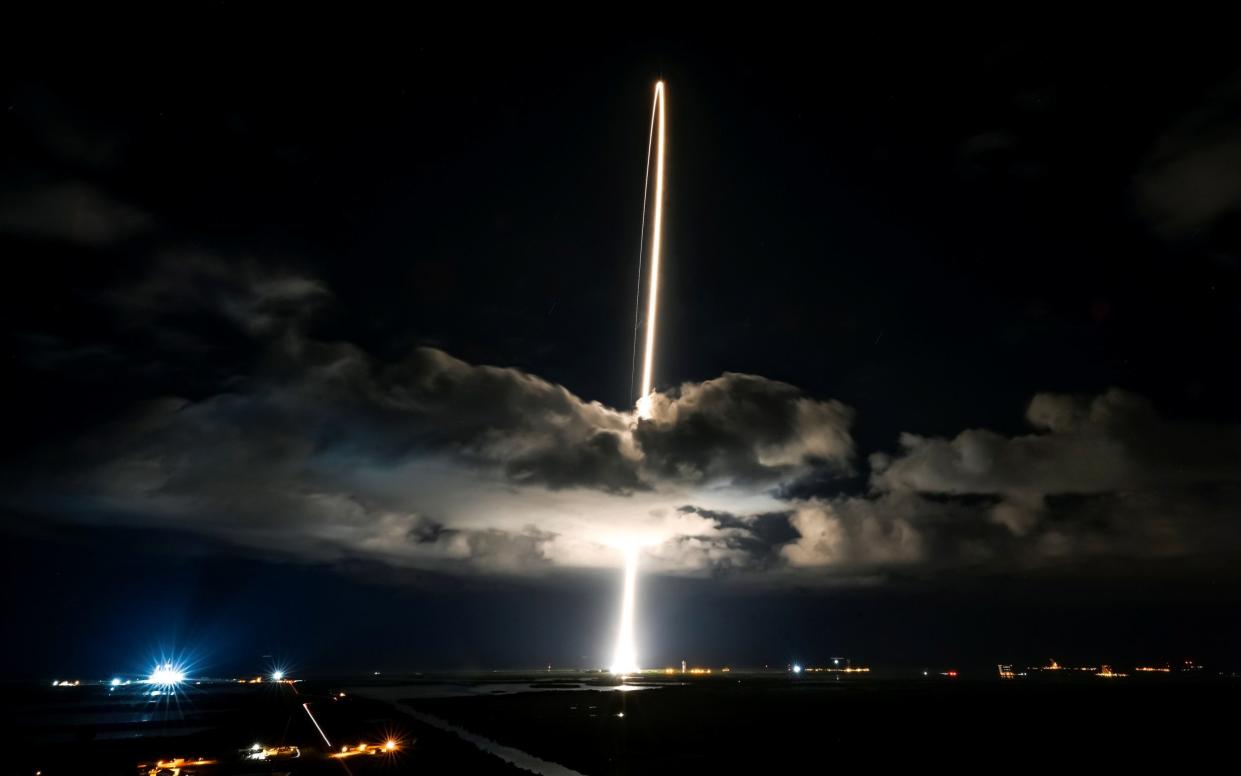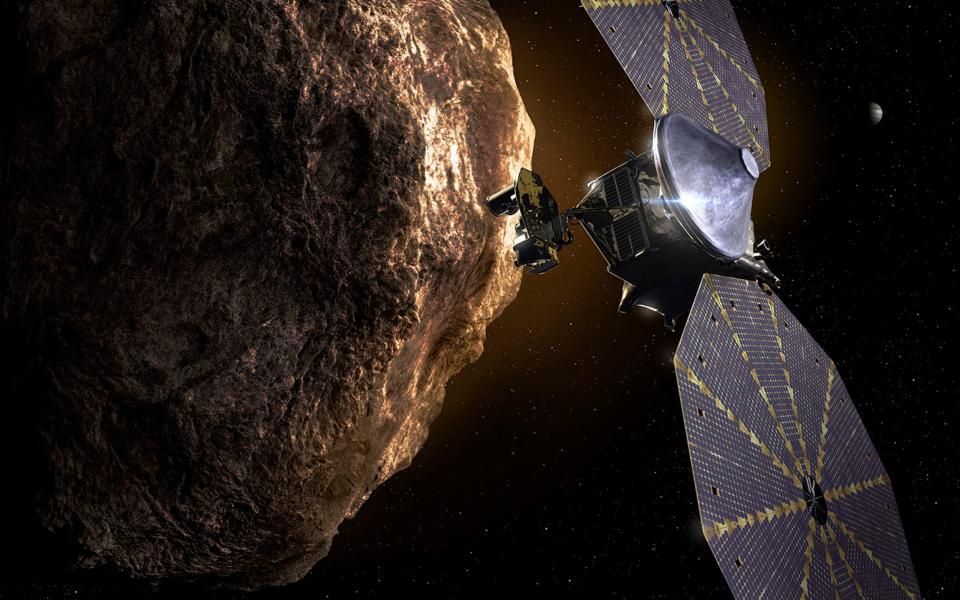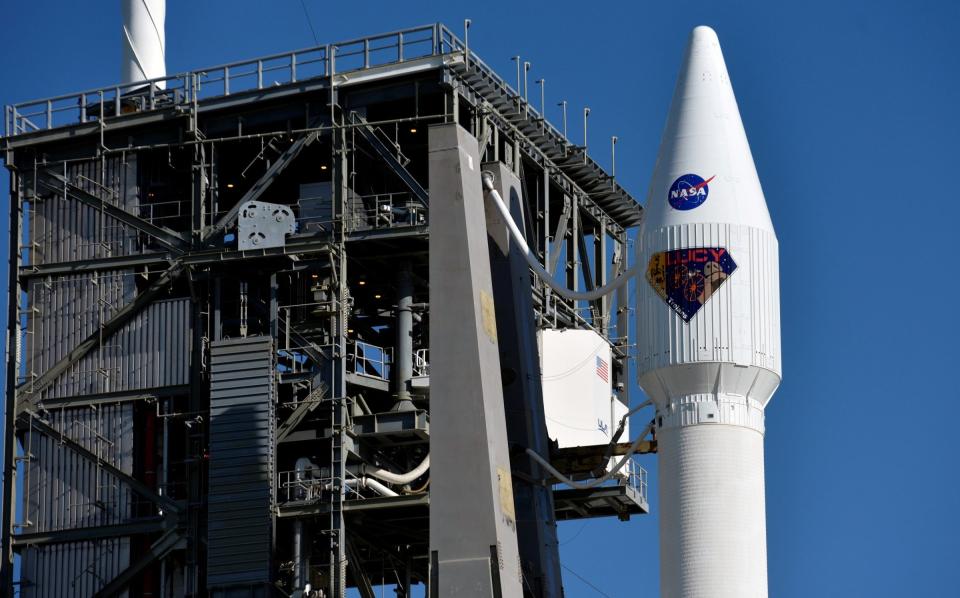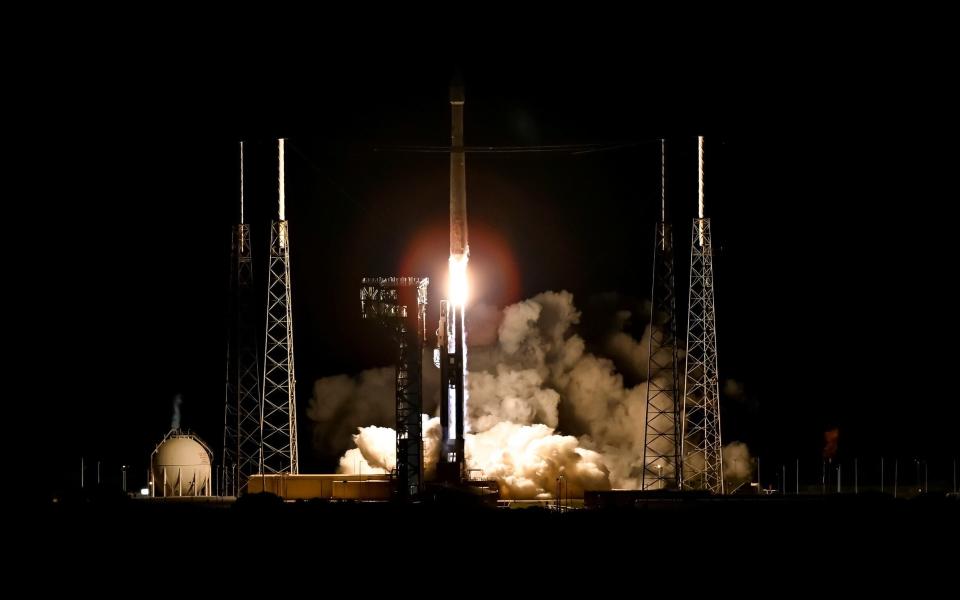Nasa sends Lucy probe on 12-year mission to explore asteroids around Jupiter

Nasa has sent a spacecraft deep into the solar system to explore eight asteroids clustered around Jupiter.
The uncrewed spacecraft, called Lucy, launched from Cape Canaveral on a mission that is expected to take 12 years.
An Atlas V rocket blasted off before dawn, sending Lucy on a roundabout orbital journey spanning nearly 4 billion miles (6.3 billion kilometers).
"I'm just elated," NASA's associate administrator, Robert Cabana, said following liftoff. "This is the coolest darn mission."
It will visit eight different asteroids, known as Trojans. The asteroids were given their name by the astronomer who first calculated the orbits they followed.
Formed around 4.5 billion years ago, the Trojans are believed to be leftovers from the formation of the solar system.

Having been trapped in a stable orbit for billions of years, the asteroids could prove invaluable to researchers.
“We’ve studied a lot of asteroids and comets, and they all paint certain parts of the picture,” Bill Bottke, a member of the team behind the mission, told The Verge.
“But the Trojans, we think, paint another part of the picture — but we’re not sure what part yet.”
Drawing power from two huge circular solar wings, Lucy will chase down five asteroids in the leading pack of Trojans in the late 2020s.
The spacecraft will then swoop back toward Earth for another gravity assist in 2030 that will swing it back out to the trailing Trojan cluster, where it will zip past the final two targets in 2033.
It's a complicated, circuitous path that had NASA's science mission chief, Thomas Zurbuchen, shaking his head at first. "You've got to be kidding. This is possible?" he recalled asking.
Lucy will pass within 600 miles (965 kilometers) of each target; the biggest one is about 70 miles (113 kilometers) across.
"Are there mountains? Valleys? Pits? Mesas? Who knows? I'm sure we're going to be surprised," said Johns Hopkins University's Hal Weaver, who is in charge of Lucy's black-and-white camera.
"But we can hardly wait to see what ... images will reveal about these fossils from the formation of the solar system."

Such a mission does not come cheap and the voyage will cost an estimated $981 million (£714 million).
Fitted with a powerful camera – known as a long-range reconnaissance imager – Lucy will be able to capture high-resolution pictures of the asteroids.
It is also fitted with instruments to map the surface geology of each asteroid.
In addition, the craft has been fitted with a plaque containing messages from 20th-century thinkers including Albert Einstein, Martin Luther King, and Carl Sagan.
The spacecraft has been named after “Lucy” a skeleton of a pre-human ancestor, which was found 40 per cent intact in Ethiopia.
Scientists believe that Lucy helped them understand human evolution.

That discovery got its name from the 1967 Beatles song "Lucy in the Sky with Diamonds," prompting NASA to send the spacecraft soaring with band members' lyrics and other luminaries' words of wisdom imprinted on a plaque.
The spacecraft also carried a disc made of lab-grown diamonds for one of its science instruments.
In a prerecorded video for NASA, Beatles drummer Ringo Starr paid tribute to his late colleague John Lennon, credited for writing the song that inspired all this.
"Lucy is going back in the sky with diamonds. Johnny will love that," Starr said. "Anyway, If you meet anyone up there, Lucy, give them peace and love from me."

